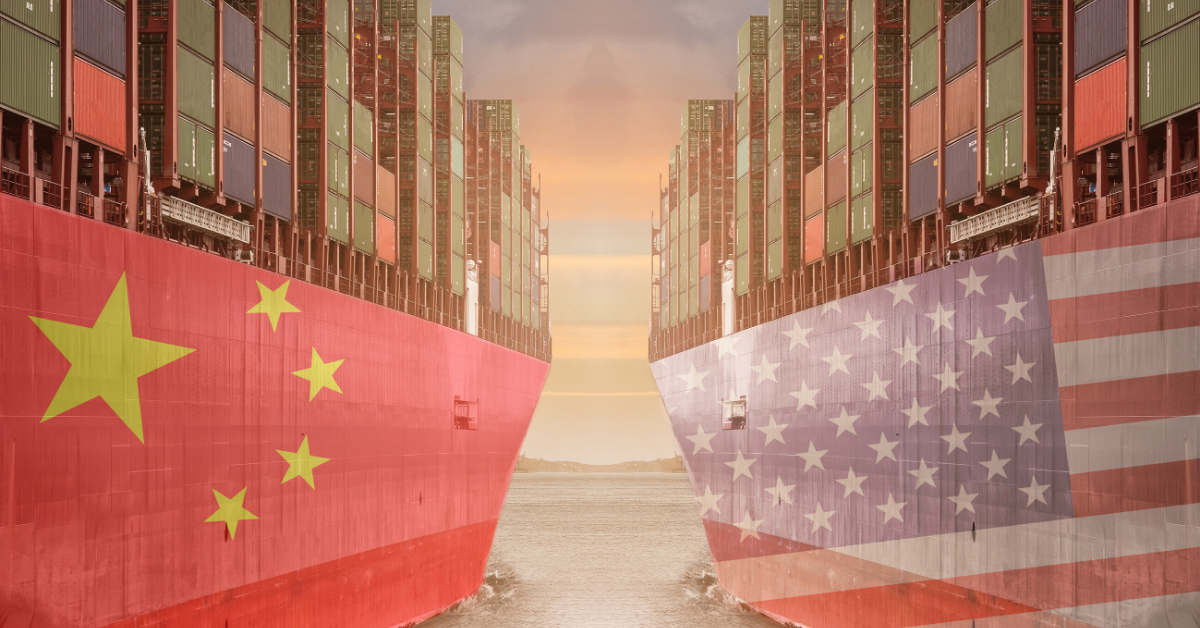It’s been a long and arduous journey, but at last, after 16 months of tension between the world’s two largest economies, the US-China trade war is winding down.
The US and China are currently holding in-depth discussions to establish a trade deal which should lead to the removal of punitive tariffs. Trump administration officials seem optimistic that phase one of that deal will come together relatively soon; China certainly wants to see the repeal of tariffs which now apply to the majority of its US exports.
But after a year of blows, the long-term effects of the trade war are becoming known, as tariffs on the global economy have rippled out to affect much more than just the US and China.
Impacts So Far
We can’t measure the long-term effects of the trade war merely in shifting rates of imports or exports– the uncertainty caused by tensions have been felt far and wide.
Last month, the Trump administration placed tariffs on $7.5 billion worth of EU goods after the WTO decided this was permissible due to EU subsidies to Airbus. US tariffs have been matched by increases on the US by Canada and the EU. More countries are also bringing disputes to the WTO: in general, the US’s actions have simply heightened trade tension.
To take one industry as an example, nearly 70% of electronics manufacturers have reported lower profit margins due to the trade war. This is because while tariffs create higher costs for imported goods, companies cannot always pass those costs along to customers. Sometimes companies in the tech industry have long-term contracts with guaranteed prices. Furthermore, they simply need to be competitive, especially compared to those firms which are not impacted by the long-term effects of the trade war.
On top of that, the ever-changing tariff situation creates pressure on companies’ administration and operations as they try to navigate the turbulent waters. It takes time and resources to identify which suppliers have added tariffs, to keep track of new rules, to reallocate tariff costs, and so on. Simultaneously, as some companies pull inventory forward to avoid tariffs, industries pay more for warehousing and storage. In short, not all costs are being passed on to customers, and the fallout is multifaceted and sometimes tough to quantify.
All of this difficulty– this drop in profitability– inhibits investment. Out of the companies recently surveyed by IPC, the association for electronics industries, a full 21% said they are reducing investment in the US. This is the opposite of Trump’s purported intent.
Lingering Effects
Logistics actors may be particularly susceptible to this type of uncertainty. The UN has warned that rising protectionism will slow growth across the maritime sector over the next five years, and “trade tension and growth in protectionism” are the biggest risks for shipping. In 2019, the international maritime trade is expected to grow by 2.6%, below the historical average of 3%. This can easily be traced to the heightened uncertainty of the times.
Boeing is a prime example of the way the consequences of the trade war will linger for years to come. As a result of the trade war, they’ve been seeing weaker demand for their 787s. Starting next year, they’ll cut production from 14 to 12 per month, and keep that lower rate for the next two years. This is all due to low order numbers from China.
“We’re going to continue to monitor the US-China trade policy discussions,” said CEO Dennis Muilenburg.
Reaping the Benefits
Some of these effects will be good news for actors who haven’t gotten so much attention as the big trade guns are fired. India, for one, has gained about $755 million in additional exports to the US in the first half of 2019 alone. As the total trade diversion effects climb past $21 billion, South Korea, Canada, and India are reaping much of the benefits.
Vietnam, in particular, has absorbed so much of the industry that it can’t quite handle it. US importers of household goods ramped up orders from Vietnam in order to avoid Chinese tariffs to such a degree that Vietnam is straining capacity. They’ve seen a 34% jump in exports to the US, including a 14% increase in imports of computers and accessories compared to 2018.
But compared to an increase of containerized imports from Asia of 7.1% over 2017, imports of household goods from Asia increased only 0.6%: this tells us Vietnam has not been able to offset declining imports from China. While it has been building up manufacturing capacity and infrastructure for years, it can no longer supply sufficient skilled labor. Services in the trans-Pacific are also designed mostly for North Asia and China markets and haven’t yet been able to fully adjust to the shift.
What Does The Future Hold
So, what will the future hold? Well, that depends in part upon who is elected next year. We know (as well as anyone can) what Trump’s approach is. If Biden is elected, he has said he wouldn’t sign any new trade deal until investments are made in American workers and infrastructure. Sanders wants to work with the WTO and the UN to pressure China. And Warren has noted that tariffs are not by themselves a long-term solution. We are certainly seeing proof of that now.
Your Trusted Partner
Red Arrow provides expertise and white glove customer service with fast-growing, complex, and high-value supply chains. As the next-generation model of logistics companies, Red Arrow offers tailored transportation and logistics solutions – from single shipments to complex over-dimensional and international orders.
Red Arrow offers the scale and scope of services including air, ocean, and ground transportation to meet the budget and schedule requirements of the largest and smallest companies alike. If we can be of assistance, please email us at info@redarrowlogistics.com or give us a call 425-747-7914.





